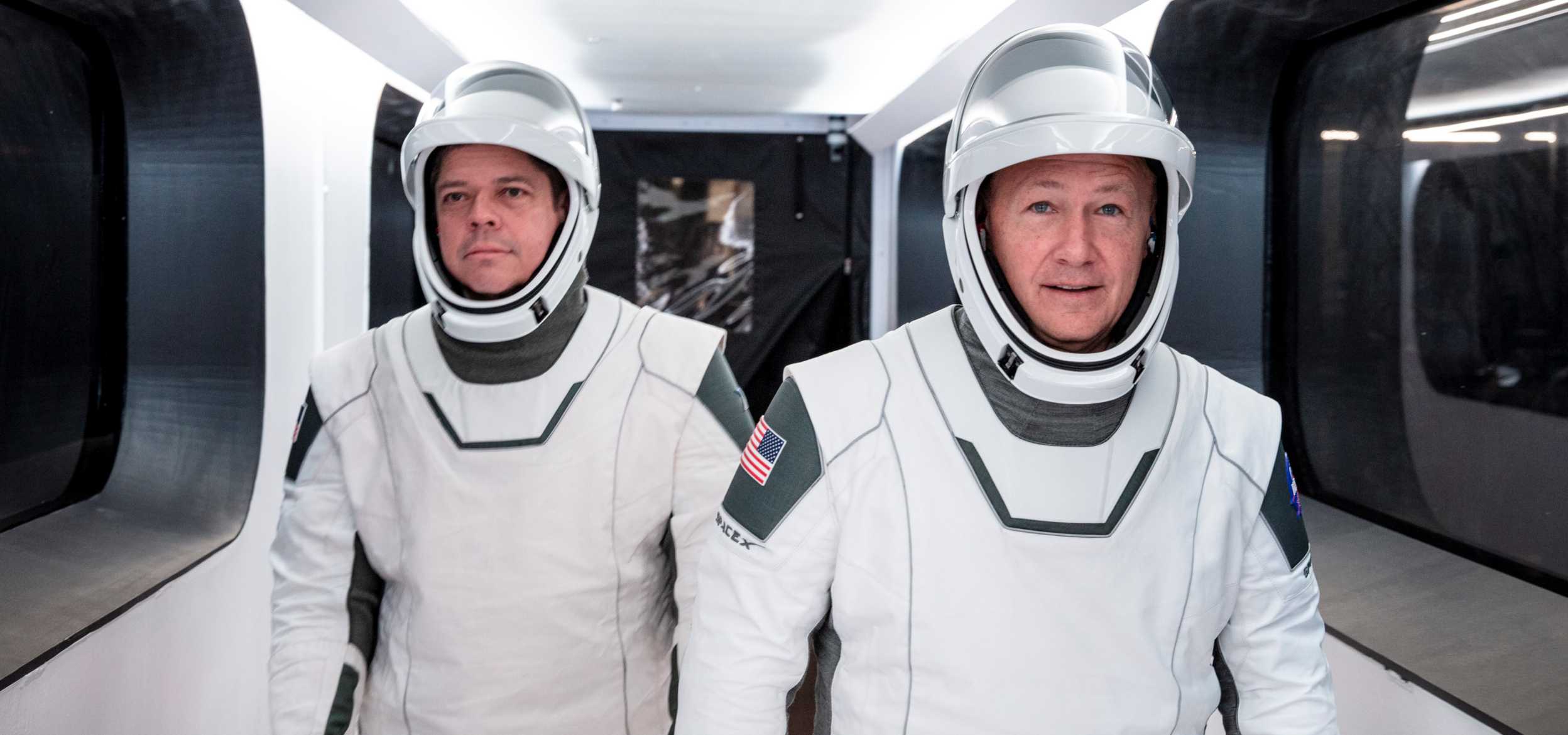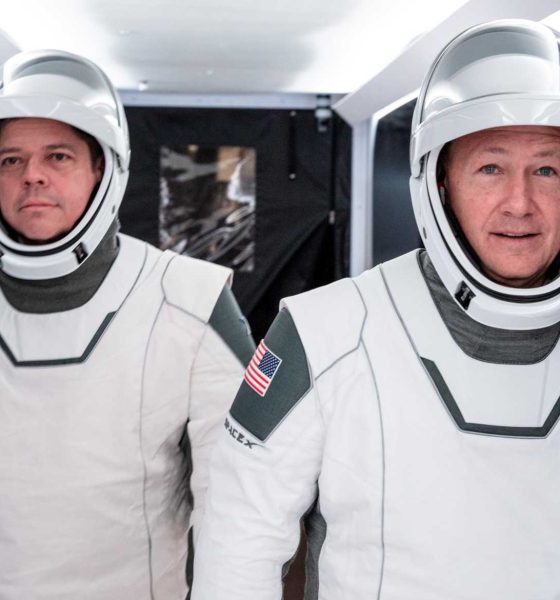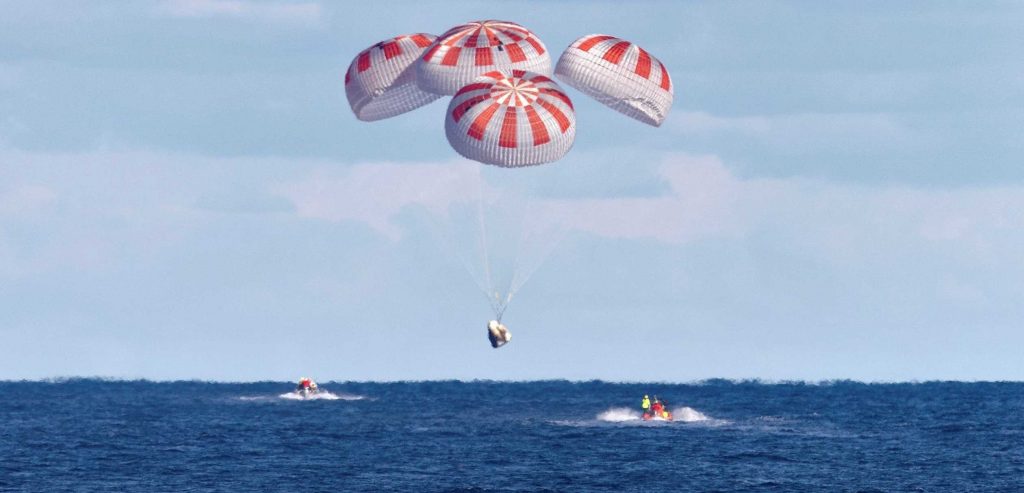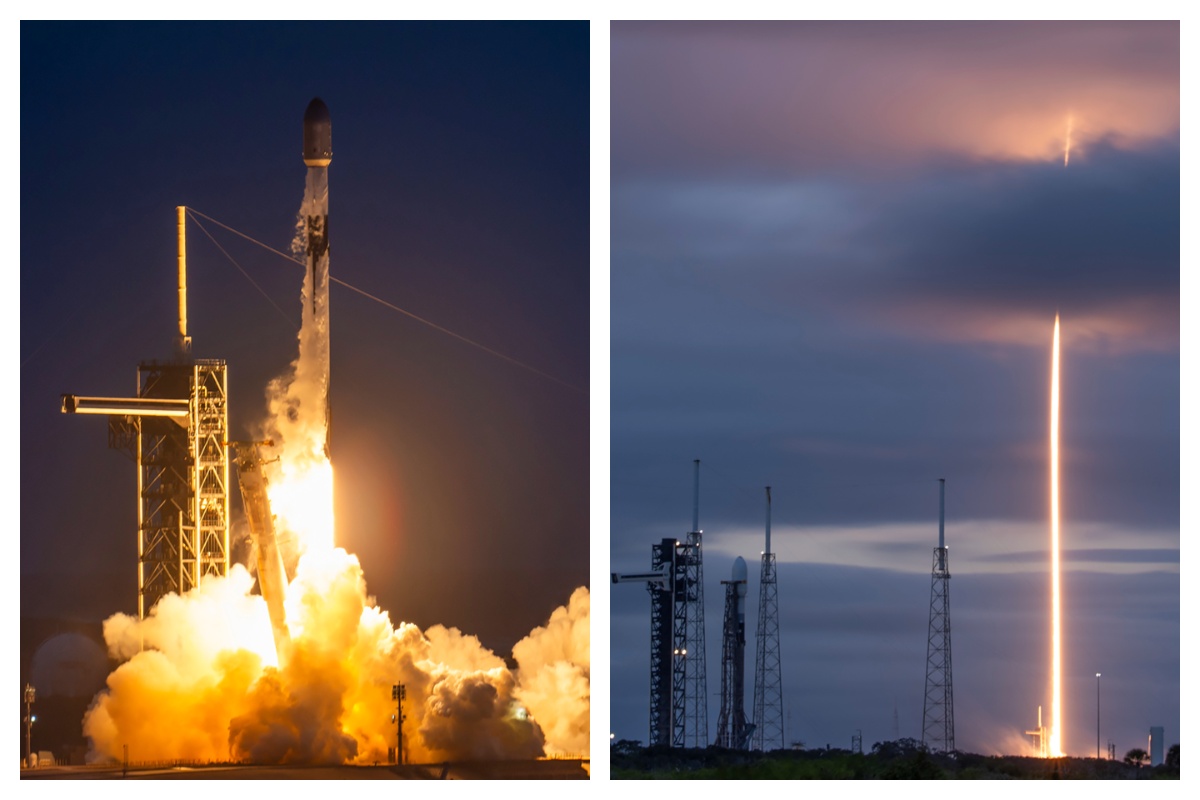

Space
SpaceX, NASA ready for first crewed launch from US soil in almost a decade
On Wednesday, March 18th, NASA invited media to attend SpaceX’s highly anticipated upcoming Demo-2 mission confirming that SpaceX would be the first of NASA’s Commercial Crew Program (CCP) partners – and first private spaceflight company – to return crewed orbital spaceflight to American soil following an 8-year absence. In the media release, NASA states “this mission will be the return of human spaceflight launch capabilities to the United States and the first launch of American astronauts aboard an American rocket and spacecraft since the final space shuttle mission on July 8, 2011.”
NASA and SpaceX are “currently targeting no earlier than mid-to-late May” for the debut DM-2 crewed mission and final end-to-end test of SpaceX’s human spaceflight system and the Crew Dragon capsule. A successful DM-2 should certify SpaceX to support regular operational crew missions.
The confirmation of a mid-to-late May launch date aligns with what SpaceX President and chief operating officer, Gwynne Shotwell stated while speaking to reporters at the Satellite 2020 Conference in Washington D.C. earlier this month. Although the May time-frame does not meet the Q1 launch date previously anticipated by SpaceX CEO and founder Elon Musk, it does serve a greater purpose for NASA.
Long-duration end-to-end test
As previously reported by Teslarati, DM-2 will send NASA astronauts, Bob Behnken and Doug Hurley, to the International Space Station (ISS) for a suspected extended long-duration stay. Initially, the test demonstration flight was expected to only support a week or so stay at the ISS mirroring Crew Dragon’s previous DM-1 test flight in March of 2019. However, early in 2020, NASA and SpaceX discussed opening up the possibility of extending the duration of the test flight to reflect an operational length stay anywhere between 1.5 and 3 months. In support of a longer duration stay, Behnken and Hurley have spent the last few weeks continuously training for life and duty aboard the ISS at Johnson Space Center in Houston, Texas.
An extension in mission duration length would ensure that NASA is able to keep a presence of more than just one astronaut aboard the ISS when NASA astronaut crew members Jessica Meir and Drew Morgan depart the station in the late Spring of this year. According to Eric Berger of Ars Technica, a longer-duration mission not only ensures more NASA crew members on-station but could ensure that Behnken, a veteran spacewalker, could be there to support NASA astronaut Chris Cassidy with any extra-vehicular activity (EVA) should the need arise.

As a true end-to-end test to certify SpaceX’s human spaceflight capabilities, DM-2 will not only feature launch and autonomous docking operations with the ISS but splashdown landing and recovery procedures as well. DM-2 will serve as the ultimate test of Crew Dragon’s Mark 3 parachutes hopefully enabling Behnken and Hurley to return to Earth in gentle splashdown style in the Atlantic Ocean.
It had previously been debated which of the NASA CCP partners, SpaceX with the Crew Dragon or Boeing with its CST-100 Starliner crew capsule, would likely be the first to return astronauts to the ISS. However, Boeing’s debut Starliner orbital flight test to the ISS in December of 2019 resulted in some surprising errors and a subsequent extensive investigation and list of sixty-one suggested corrective actions. Now, it is apparent that SpaceX will be the first private company to return crewed spaceflight to American soil after an almost decade long hiatus. It will also be the first to support NASA astronaut orbital spaceflight with a privately built crew capsule and rocket in just two to three short months.
Check out Teslarati’s newsletters for prompt updates, on-the-ground perspectives, and unique glimpses of SpaceX’s rocket launch and recovery processes.

Investor's Corner
SpaceX IPO is coming, CEO Elon Musk confirms
However, it appears Musk is ready for SpaceX to go public, as Ars Technica Senior Space Editor Eric Berger wrote an op-ed that indicated he thought SpaceX would go public soon. Musk replied, basically confirming it.

Elon Musk confirmed through a post on X that a SpaceX initial public offering (IPO) is on the way after hinting at it several times earlier this year.
It also comes one day after Bloomberg reported that SpaceX was aiming for a valuation of $1.5 trillion, adding that it wanted to raise $30 billion.
Musk has been transparent for most of the year that he wanted to try to figure out a way to get Tesla shareholders to invest in SpaceX, giving them access to the stock.
He has also recognized the issues of having a public stock, like litigation exposure, quarterly reporting pressures, and other inconveniences.
However, it appears Musk is ready for SpaceX to go public, as Ars Technica Senior Space Editor Eric Berger wrote an op-ed that indicated he thought SpaceX would go public soon.
Musk replied, basically confirming it:
As usual, Eric is accurate
— Elon Musk (@elonmusk) December 10, 2025
Berger believes the IPO would help support the need for $30 billion or more in capital needed to fund AI integration projects, such as space-based data centers and lunar satellite factories. Musk confirmed recently that SpaceX “will be doing” data centers in orbit.
AI appears to be a “key part” of SpaceX getting to Musk, Berger also wrote. When writing about whether or not Optimus is a viable project and product for the company, he says that none of that matters. Musk thinks it is, and that’s all that matters.
It seems like Musk has certainly mulled something this big for a very long time, and the idea of taking SpaceX public is not just likely; it is necessary for the company to get to Mars.
The details of when SpaceX will finally hit that public status are not known. Many of the reports that came out over the past few days indicate it would happen in 2026, so sooner rather than later.
But there are a lot of things on Musk’s plate early next year, especially with Cybercab production, the potential launch of Unsupervised Full Self-Driving, and the Roadster unveiling, all planned for Q1.
News
SpaceX reportedly mulling IPO, eyeing largest of all time: report
“I do want to try to figure out some way for Tesla shareholders to participate in SpaceX. I’ve been giving a lot of thought to how to give people access to SpaceX stock,” Musk said.

SpaceX is reportedly mulling an initial public offering, eyeing what would be the largest valuation at the time of availability of all time, a new report from Bloomberg said on Tuesday.
It is one of many reports involving one of Elon Musk’s companies and a massive market move, as this is not the first time we have seen reports of an IPO by SpaceX. Musk himself has also dispelled other reports in the past of a similar nature, including an xAI funding round.
SpaceX and Musk have yet to comment on the report. In the past, untrue reports were promptly replied to by the CEO; this has not yet gained any response, which is a good sign in terms of credibility.
However, he said just a few days ago that stories of this nature are inaccurate:
“There has been a lot of press claiming SpaceX is raising money at $800B, which is not accurate. SpaceX has been cash flow positive for many years and does periodic stock buybacks twice a year to provide liquidity for employees and investors. Valuation increments are a function of progress with Starship and Starlink and securing global direct-to-cell spectrum that greatly increases our addressable market. And one other thing that is arguably most significant by far.”
There has been a lot of press claiming @SpaceX is raising money at $800B, which is not accurate.
SpaceX has been cash flow positive for many years and does periodic stock buybacks twice a year to provide liquidity for employees and investors.
Valuation increments are a…
— Elon Musk (@elonmusk) December 6, 2025
Musk has discussed a potential IPO for SpaceX in recent months, as the November 6 shareholder meeting, as he commented on the “downsides” of having a public company, like litigation exposure, quarterly reporting pressures, and other inconveniences.
Nevertheless, Musk has also said he wants there to be a way for Tesla shareholders to get in on the action. At the meeting in early November, he said:
“I do want to try to figure out some way for Tesla shareholders to participate in SpaceX. I’ve been giving a lot of thought to how to give people access to SpaceX stock.”
Additionally, he added:
“Maybe at some point., SpaceX should become a public company despite all the downsides of being public.”
Musk has been historically reluctant to take SpaceX public, at times stating it could become a barrier to colonizing Mars. That does not mean it will not happen.
Bloomberg’s report cites multiple unidentified sources who are familiar with the matter. They indicate to the publication that SpaceX wants to go public in mid-to-late 2026, and it wants to raise $30 billion at a valuation of around $1.5 trillion.
This is not the first time SpaceX has discussed an IPO; we reported on it nine years ago. We hope it is true, as the community has spoken for a long time about having access to SpaceX stock. Legendary investor Ron Baron is one of the lucky few to be a SpaceX investor, and said it, along with Tesla, is a “lifetime investment.”
Tesla bull Ron Baron reveals $100M SpaceX investment, sees 3-5x return on TSLA
The primary driver of SpaceX’s value is Starlink, the company’s satellite internet service. Starlink contributes 60-70 percent of SpaceX’s revenue, meaning it is the primary value engine. Launch services, like Falcon 9 contracts, and the development of Starship, also play supporting roles.
News
SpaceX reaches incredible milestone with Starlink program

SpaceX reached an incredible milestone with its Starlink program with a launch last night, as the 3,000th satellite of the year was launched into low Earth orbit.
On Monday, SpaceX also achieved its 32nd flight with a single Falcon 9 rocket from NASA’s Kennedy Space Center.
The mission was Starlink 6-92, and it utilized the Falcon 9 B1067 for the 32nd time this year, the most-used Falcon booster. The flight delivered SpaceX’s 3000th Starlink satellite of the year, a massive achievement.
There were 29 Starlink satellites launched and deployed into LEO during this particular mission:
Falcon 9 launches 29 @Starlink satellites from Florida pic.twitter.com/utKrXjHzPN
— SpaceX (@SpaceX) December 9, 2025
SpaceX has a current goal of certifying its Falcon boosters for 40 missions apiece, according to Spaceflight Now.
The flight was the 350th orbital launch from the nearby SLC-40, and the 3,000 satellites that have been successfully launched this year continue to contribute to the company’s goal of having 12,000 satellites contributing to global internet coverage.
There are over five million users of Starlink, the latest data shows.
Following the launch and stage separation, the Falcon 9 booster completed its mission with a perfect landing on the ‘Just Read the Instructions’ droneship.
The mission was the 575th overall Falcon 9 launch, highlighting SpaceX’s operational tempo, which continues to be accelerated. The company averages two missions per week, and underscores CEO Elon Musk’s vision of a multi-planetary future, where reliable connectivity is crucial for remote work, education, and emergency response.
As Starlink expands and works toward that elusive and crucial 12,000 satellite goal, missions like 6-92 pave the way for innovations in telecommunications and enable more internet access to people across the globe.
With regulatory approvals in over 100 countries and millions of current subscribers, SpaceX continues to democratize space, proving that reusability is not just feasible, but it’s also revolutionary.








